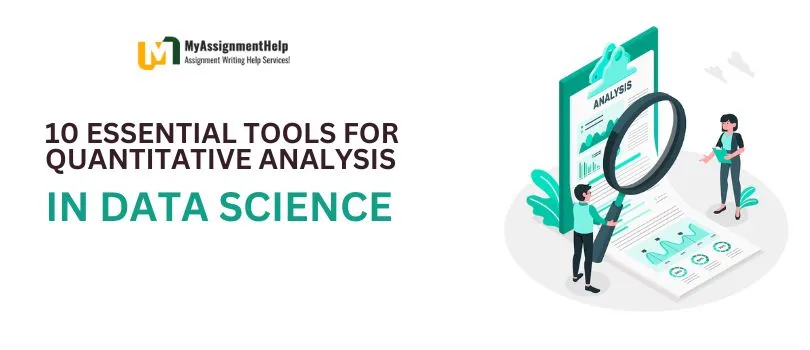In the rapidly evolving landscape of data science, quantitative analysis stands as a cornerstone for extracting valuable insights from vast datasets. Whether you’re a seasoned data scientist or just stepping into the realm of quantitative analysis, having the right tools at your disposal is essential for success. In this guide, we’ll explore ten indispensable tools that empower professionals in their Quantitative Analysis assignment help endeavors, ensuring accuracy, efficiency, and actionable results.

1. Python and R Programming Languages
Python and R are the backbone of quantitative analysis in data science. These versatile programming languages offer an extensive array of libraries and packages specifically tailored for data manipulation, statistical analysis, and visualization. From pandas and NumPy in Python to ggplot2 and dplyr in R, mastering these languages provides a robust foundation for quantitative reasoning and analysis.
2. Jupyter Notebooks
Jupyter Notebooks provide an interactive environment ideal for prototyping, experimentation, and documentation in quantitative analysis. With support for multiple programming languages, including Python and R, Jupyter Notebooks enable users to seamlessly integrate code, visualizations, and explanatory text, facilitating collaboration and reproducibility in data science projects.
3. SQL (Structured Query Language)
SQL is indispensable for querying and managing relational databases, which are ubiquitous in data science. Proficiency in SQL enables data scientists to efficiently extract, transform, and analyze data from diverse sources, laying the groundwork for rigorous quantitative analysis and insightful decision-making.
4. Excel
Despite the proliferation of advanced analytics tools, Excel remains a staple for quantitative analysis due to its familiarity and versatility. From basic calculations to complex data manipulations, Excel provides a user-friendly interface for exploring and visualizing data, making it an invaluable tool for both beginners and experts alike.
5. Pandas
Pandas is a powerful Python library for data manipulation and analysis, particularly well-suited for handling structured data. With its intuitive data structures and functions, Pandas simplifies tasks such as data cleaning, aggregation, and transformation, streamlining the quantitative analysis process.
6. NumPy
NumPy is a fundamental library for numerical computing in Python, offering support for multidimensional arrays, mathematical functions, and linear algebra operations. As a cornerstone of scientific computing, NumPy empowers data scientists to perform complex numerical computations with efficiency and ease, essential for quantitative reasoning and analysis.
7. Matplotlib and Seaborn
Matplotlib and Seaborn are essential visualization libraries in Python, enabling data scientists to create insightful plots, charts, and graphs for conveying quantitative insights effectively. Whether exploring data distributions, trends, or correlations, these libraries provide a rich set of tools for visualizing the results of quantitative analysis.
8. TensorFlow and PyTorch
TensorFlow and PyTorch are leading frameworks for machine learning and deep learning, essential for advanced quantitative analysis tasks such as predictive modeling and pattern recognition. With their robust APIs and extensive documentation, these frameworks empower data scientists to build and deploy sophisticated models for extracting actionable insights from data.
9. Tableau
Tableau is a powerful data visualization tool that simplifies the creation of interactive dashboards and reports. With its intuitive drag-and-drop interface and robust visualization capabilities, Tableau enables data scientists to explore and communicate quantitative findings effectively, driving informed decision-making across organizations.
10. GitHub
GitHub serves as a central hub for collaborative development and version control in data science projects. By hosting code repositories and facilitating collaboration among team members, GitHub enhances reproducibility, transparency, and accountability in quantitative analysis endeavors, ensuring that insights can be shared, verified, and built upon effectively.
In conclusion, mastering the essential tools for quantitative analysis is paramount for success in data science. Whether performing statistical analysis, predictive modeling, or data visualization, these tools empower professionals to extract actionable insights from complex datasets, driving informed decision-making and innovation. By harnessing the power of Python, R, SQL, and other indispensable tools, data scientists can elevate their quantitative analysis skills and make meaningful contributions to the field of data science.
For further assistance with quantitative analysis assignments or quantitative reasoning assignment help tasks, consider seeking help from reputable platforms like my assignment help, where expert tutors can provide personalized guidance and support tailored to your specific needs. With the right tools and resources at your disposal, you can embark on your journey to mastering quantitative analysis with confidence and proficiency.





